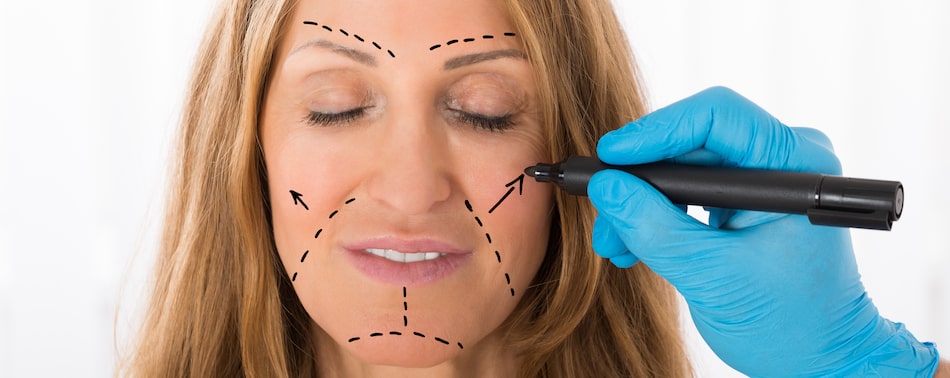
As the face ages, lax skin, wrinkles on the forehead and jowls can all start to appear. A facelift is a surgical procedure that rejuvenates the look of the face and gives the patient a more youthful appearance. Even through there are multiple facelift options available to the public, the surgeon needs to keep the anatomy of the face in mind when planning and performing the procedure. The structure of the face plays a key role in how a facelift is performed and the type of technique used by the doctor can be determined by the anatomy of the face. Keep reading for more information about how facial anatomy contributes to the overall facelift process.
 The anatomy of the face is an important element to consider when planning a facelift as well as treatments that involve injections such as fillers and Botox. The doctor needs to analyze the facial structure so they can accurately recommend the appropriate facelift procedure that matches the anatomy of the face and the goals of the patient while also providing a symmetrical look to the face.
The anatomy of the face is an important element to consider when planning a facelift as well as treatments that involve injections such as fillers and Botox. The doctor needs to analyze the facial structure so they can accurately recommend the appropriate facelift procedure that matches the anatomy of the face and the goals of the patient while also providing a symmetrical look to the face.
The technique choice for a surgical facelift can actually vary from one side of the face to the other side of the face due to the anatomy of the face. By analyzing the face, the doctor will be able to plan safety precautions, choose the correct surgical technique, determine the targeted areas on the face, and create a treatment with the desired final results in mind. When examining the anatomy of the face, the doctor needs to assess the bone structure of the patient, determine the laxity of the skin, and also determine fat pad volume to tailor the surgery for a successful outcome that includes a balanced and symmetrical appearance.
One of the most important parts of evaluating the facial anatomy is searching for natural areas of symmetry. For example, the face has a shorter and wider side as well as a longer and thinner side. By identifying the asymmetries of the face, the surgeon can create a treatment plan that includes creating proportion and symmetry to the facial features.
The surgeon also needs to assess the layers of the face involved with the anatomy including the skin, bone structure, muscles, and subcutaneous fat. By assessing these layers of the face, the surgeon gets an overall picture of the facial anatomy of the patient.
A facelift can sometimes combine the performance of both invasive and noninvasive procedures so the treatment plan can be tailored to the individual needs of the specific patient.
Two of the main factors that play a part in the chosen procedure are the age and lifestyle of the patient. A younger patient likely has less aging and wear on their skin so they might be able to gain their desired results using noninvasive options. If the patient is older, their skin probably has a good amount of wear and tear and signs of aging so the skin will likely need a more comprehensive treatment that can combine both invasive and noninvasive procedures.
The treatment options should also be discussed in advance with the patient in order to get their input so they can share their procedure preferences.
The first step in the process is scheduling a consultation appointment with a board-certified plastic surgeon who is trained and experienced in the facelift process. The consultation appointment gives the patient a chance to chat about their concerns and goals and to ask questions about their treatment options. They can also ask to see “before and after” photos of actual patients treated by the surgeon in the past.
Patients need to consider the amount of downtime that will be needed after the procedure of choice is performed. They should make sure they have the necessary amount of time off work, and that they will have the help of family and friends in order to properly heal both mentally and physically. An invasive surgical procedure will offer longer-lasting results, but the downtime will be longer than a noninvasive treatment.
A facelift patient needs to have realistic expectations in mind for the final results so they will not be surprised by the extent of the results they will see after the procedure. It is also important to remember that a facelift or other facial rejuvenation procedures can reduce signs of aging, but they will not be able to stop the actual aging process.
With the proper information from the doctor and the experience of the surgeon, facelift patients can gain a more youthful and rejuvenated look to the face as long as the plastic surgeon considers the unique facial anatomy of the person who wants to gain a younger and refreshed appearance to their face.
- MA